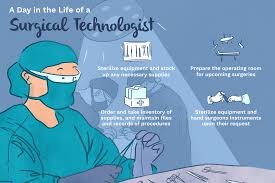
how does cryptocurrency work
Unlocking the Secrets of Cryptocurrency: How It Works
Cryptocurrency isn’t just a fancy term; it’s changing how we think about money. But how does it actually work? This guide is here to break it all down in simple terms.
What is Cryptocurrency?
At its core, cryptocurrency is digital money. You can’t hold it in your hand like cash, but it exists online. The most popular type is Bitcoin, but there are thousands of others, like Ethereum and Litecoin. These digital coins let you buy things and make transfers without needing banks. Imagine sending money to a friend in another country without any extra fees—sounds great, right?
The Magic of Blockchain Technology
So, how does cryptocurrency work behind the scenes? Enter blockchain technology. Think of blockchain as a digital ledger, like a diary that everyone can see but no one can edit. Each entry in this diary is called a block, and when you link these blocks together, you get a chain—hence the name “blockchain.”
This setup ensures that all transactions are transparent and secure. No one can just go back and change what happened, which keeps fraud at bay. It’s like having a secure vault that tracks every single transaction made in crypto.
Cryptography: The Secret Sauce
You might wonder, “How do people trust this digital money?” The answer is cryptography. It’s the science of keeping information safe. Each transaction is encrypted, meaning it’s turned into a code that can only be read by those who have the right keys. This makes it super hard for anyone to steal or tamper with your funds. Think of it as putting your money in a super-secure safe that only you can open.
Mining: How New Coins Are Created
Ever heard of crypto mining? It’s not like digging up gold; it’s more about solving complex math problems. Miners use powerful computers to compete to solve these problems, and the first one to crack it gets rewarded with new coins. This process keeps the network running smoothly, like a team of busy workers keeping a factory functional.
Mining ensures that transactions are verified and added to the blockchain, preventing fraud and double-spending. It’s the backbone that supports the entire cryptocurrency system.
Wallets: Your Digital Bank
Just like you need a bank to keep your money safe, you need a digital wallet for your cryptocurrency. Wallets come in different forms—software or hardware. Software wallets are apps you can use on your phone or computer, while hardware wallets are physical devices that keep your keys offline.
Your wallet holds the keys to your digital coins. If you lose these keys, you lose your money. So, think of it as having a key to a treasure chest. You wouldn’t want to misplace that, right?
Transactions: How Money Moves
Now let’s talk about how transactions happen. When you send cryptocurrency to someone, you submit your transaction to the network. Miners then validate it, ensuring you have enough coins and that the transaction is legit. Once validated, it gets added to the blockchain, and voilà! The recipient gets their coins.
Because of this process, cryptocurrency transactions can be quicker and cheaper than traditional banking methods. It’s like sending a text message instead of having to wait for a letter to arrive.
The Future of Cryptocurrency
Cryptocurrency is still in its early stages, and its growth has been explosive. Many see it as the future of money, while others view it with skepticism. Regardless, it’s clear that cryptocurrency is here to stay, changing how we think about trading and storing value.
In conclusion, understanding how does cryptocurrency work opens up a world of possibilities. Whether you’re looking to invest, spend, or just learn, it’s essential to grasp the basics of this digital economy. With its unique technology and potential, cryptocurrency might be the key to a brighter financial future. So, are you ready to explore this fascinating world?
Related Articles:
7 Facts About Crypto-Legacy.app
Will Twitch Bits Ever Be a Cryptocurrency Real Currency?






